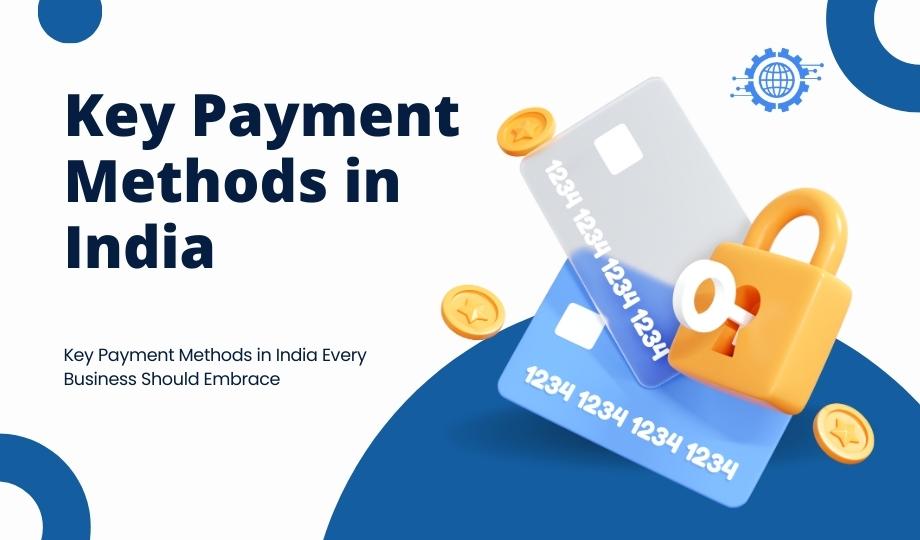The Indian government’s persistent efforts to foster a financially empowered society and promote an IT-driven economy have paved the way for innovative payment methods. The digital payment landscape in India is on track to surpass the $1 trillion mark by FY23, and recent events such as the COVID-19 pandemic and the demonetization bill have catalyzed this transformation.
India is now making significant strides towards becoming a Fintech-oriented society that is “faceless, paperless, and cashless.” These payment methods are reshaping the country’s payment ecosystem, reducing reliance on paper-based transactions. But with so many payment options available, how can businesses choose the right method for their needs?
Indian Payment Trends for 2022
In FY2022, the Indian digital payment sector has exhibited intriguing trends:
There’s a growing opportunity to cater to the financial inclusion of unbanked populations.
A flourishing ecosystem of Fintech startups is disrupting traditional trends with modern services and payment features.
Diverse business models and prepaid cards have emerged.
Consumer payments through mobile wallets have increased for utilities such as electricity, on-demand services, and OTT services.
The UPI payment method, since 2016, has shown an impressive CAGR of 414% until FY19–20, and this number is expected to multiply sevenfold by 2025.
The BBPS and NETC sectors have grown at rates of 500% and 123%, respectively.
Many businesses have embraced payment method aggregation to manage payments made through various channels.
Top Payment Methods in India
New entrants in the Indian payment method ecosystem are compelling established brands to reevaluate their strategies, with experts forecasting new payment revenues to grow by 13% annually.
Credit/Debit Cards: VISA, Mastercard, American Express, RuPay
Credit and debit cards are widely used for digital payments in India. VISA, Mastercard, American Express, and RuPay offer robust, PCI DSS-compliant services, with two-factor authentication (PIN and OTP) to ensure secure transactions.
Cash
Despite the growth of digital payments, cash remains prevalent, especially in areas lacking digital infrastructure or where users are not tech-savvy. Cash made a comeback during the COVID-19 pandemic, emphasizing the importance of contactless options.
Digital/Mobile Wallets: Paytm, PhonePe, MobiKwik, Google Pay, AmazonPay, etc.
Mobile wallets like Paytm, PhonePe, and Google Pay have become popular for digital transactions, offering various cashback and discount incentives. These wallets are widely used for mobile recharges, utility payments, and more.
Cash On Delivery (COD)
Cash on Delivery has gained popularity in eCommerce, particularly in tier-2 and tier-4 cities. Rural India, in particular, prefers COD, making it a vital payment method for eCommerce businesses.
Mobile Contactless Payments
Mobile contactless payments, facilitated through QR codes and POS terminals, have become common in Indian retail stores. Payment gateway providers offer secure mobile wallet integration and QR-based payments, enhancing the convenience for users.
Direct Debit
Direct debit systems connect directly to users’ bank accounts and offer secure, multi-step authenticated transactions. They are ideal for paying at POS terminals, QR code transactions, and fund transfers.
Buy Now Pay Later (BNPL): ePaylater, FreeCharge, ZestMoney, PostPe, MobiKwik ZIP
BNPL services offer simplified credit solutions for paying at various retail vendors, making them popular among users. They often come with extended repayment periods.
Bank Transfers
Bank transfers, such as UPI, RTGS, NEFT, and IMPS, are widely used for online transactions. They offer secure and quick fund transfers between accounts.
Unified Payment Interface (UPI)
UPI is revolutionizing cashless payments in India, enabling real-time transfers with a simple payment address. Many payment gateway providers offer UPI integration for a seamless user experience.
Local Payment Methods and Challenges for Businesses
As the Indian payment landscape evolves, it presents both opportunities and challenges. On the one hand, there’s a growing demand for diverse payment options, leading to increased conversions. On the other hand, businesses need to address issues like transaction charges, refund fees, and the complexity of managing multiple payment methods.
Additionally, businesses must focus on cybersecurity to protect against threats like phishing, device theft, system breaches, and identity theft. The integration of modern payment methods needs to be secure and user-friendly.
How web technology expert Can Help with Indian Payment Methods
web technology expert, a payment method aggregator, offers over 300 international payment methods to support customers across various regions and preferences. It provides a low-code/no-code integration service for businesses of all sizes, ensuring PCI-DSS and GDPR compliance. web technology expert’s dashboard offers sales protection, analytics, and a unified payment system, driving conversions and revenues for businesses.
With India’s transition to digital payments, web technology expert provides a solution to streamline payment method aggregation, making it easier for businesses to adapt to the Fintech revolution and benefit from the growing trend towards cashless transactions.

